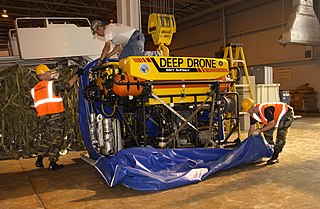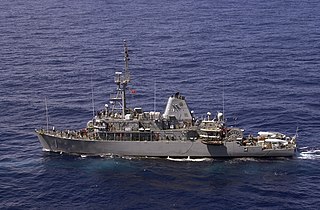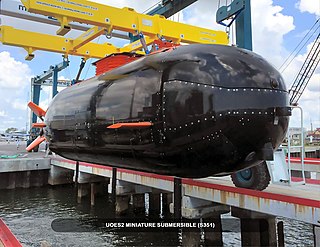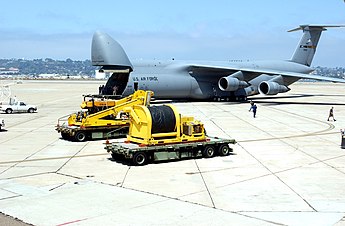
A remotely operated underwater vehicle is a tethered underwater mobile device.

A submersible is a small watercraft designed to operate underwater. The term submersible is often used to differentiate from other underwater vessels known as submarines, in that a submarine is a fully autonomous craft, capable of renewing its own power and breathing air, whereas a submersible is usually supported by a surface vessel, platform, shore team or sometimes a larger submarine. In common usage by the general public, however, the word submarine may be used to describe a craft that is by the technical definition actually a submersible. There are many types of submersibles, including both crewed and uncrewed craft, otherwise known as remotely operated vehicles or ROVs. Submersibles have many uses worldwide, such as oceanography, underwater archaeology, ocean exploration, adventure, equipment maintenance and recovery, and underwater videography.

A midget submarine is any submarine under 150 tons, typically operated by a crew of one or two but sometimes up to 6 or 9, with little or no on-board living accommodation. They normally work with mother ships, from which they are launched and recovered and which provide living accommodation for the crew and support staff.

HMS Challenger was a Royal Navy diving support vessel, operational from 1984 to 1990.

A remote control vehicle is defined as any vehicle that is teleoperated by a means that does not restrict its motion with an origin external to the device. This is often a radio control device, cable between control and vehicle, or an infrared controller. Remote control system allows to control the distant object with the use of communication medias.

A deep-submergence vehicle (DSV) is a deep-diving manned submarine that is self-propelled. Several navies operate vehicles that can be accurately described as DSVs. DSVs are commonly divided into two types: research DSVs, which are used for exploration and surveying, and DSRVs, which can be used for rescuing the crew of a sunken navy submarine, clandestine (espionage) missions, or both. DSRVs are equipped with docking chambers to allow personnel ingress and egress via a manhole.

Kaikō was a remotely operated underwater vehicle (ROV) built by the Japan Agency for Marine-Earth Science and Technology (JAMSTEC) for exploration of the deep sea. Kaikō was the second of only five vessels ever to reach the bottom of the Challenger Deep, as of 2019. Between 1995 and 2003, this 10.6 ton unmanned submersible conducted more than 250 dives, collecting 350 biological species, some of which could prove to be useful in medical and industrial applications. On 29 May 2003, Kaikō was lost at sea off the coast of Shikoku Island during Typhoon Chan-Hom, when a secondary cable connecting it to its launcher at the ocean surface broke.
The Priz class is a type of Deep Submergence Rescue Vehicle (DSRV) operated by the government of Russia. There are known to be at least five vessels of the class, several of which were involved in the failed rescue attempt when the Kursk sank on 12 August 2000. The Russian word "Priz" (“приз”) means "prize".

AS-28 is a Priz-class deep-submergence rescue vehicle of the Russian Navy, which entered service in 1986. It was designed for submarine rescue operations by the Lazurit Design Bureau in Nizhny Novgorod. It is 13.5 m (44 ft) long, 5.7 m (19 ft) high, and can operate up to a depth of 1,000 m (3,300 ft).

The LR5 is a manned submersible which was used by the British Royal Navy until 2009 when it was leased to support the Royal Australian Navy. It is designed for retrieving sailors from stranded submarines and is capable of rescuing 16 at a time. The Royal Navy now has the use of the NATO Submarine Rescue System.

The Deep Drone is a submersible remotely operated vehicle designed for mid-water salvage for the United States Navy. One vehicle is based in Largo, Maryland, under the command of The U.S. Navy Supervisor of Salvage and Diving (SUPSALV), it is maintained and operated by Phoenix International Inc.. The vehicle is capable of operating at a depth up to 8000 feet as reflected in its full name: "The Deep Drone 8000". The vehicle has a target locating sonar and two tool manipulators capable of working with tools and attaching rigging.

A deep-submergence rescue vehicle (DSRV) is a type of deep-submergence vehicle used for rescue of downed submarines and clandestine missions. While DSRV is the term most often used by the United States Navy, other nations have different designations for their vehicles.

The NATO Submarine Rescue System (NSRS) is a tri-national project to develop an international submarine rescue system. The system provides a rescue capability primarily to the partner nations of France, Norway and the United Kingdom, but also to NATO and allied nations and to any submarine equipped with a suitable mating surface around its hatches.

Avenger-class mine countermeasures ships are a class of 14 ships constructed for the United States Navy from 1987 to 1994, designed to clear mines from vital waterways. The ships have the hull designator MCM.

HSwMS Belos (A214) is a submarine rescue ship in the Swedish Navy's 1st Submarine flotilla. She carries the Submarine Rescue Vehicle URF. She is also capable of carrying the NATO rescue system NSRS. HSwMS Belos is currently [2017] the largest ship in the Swedish Navy. HMS Belos is traditionally the name of the Swedish navy's submarine rescue vessel and she is the third ship with that name.
QSZ-II submersible is a type of diving equipment developed in the People's Republic of China, and in addition to being used as an manned atmospheric diving suit, it can also be used as a remotely operated underwater vehicle (ROUV), an application frequently practiced by one of the users of QSZ-II submersible, the People's Liberation Army Navy (PLAN). QSZ-II submersible is developed by the 702nd Research Institute (中国船舶重工集团公司第702研究所) of China Shipbuilding Industry Corporation (CSIC).

MV Swift Rescue is a submarine support and rescue vessel (SSRV) that is operated by the Republic of Singapore Navy (RSN). The ship is stationed in Changi Naval Base and has a mixed crew of 27 personnel from the RSN and Swire Pacific Offshore Operations Pte Ltd, the marine arm of Swire Group.
The RV Denar 2 is a Turkish research and survey vessel owned by TOMA Maritime S.A. Istanbul, Turkey and operated 2E Maritime in Istanbul, Turkey.
Diving support equipment is the equipment used to facilitate a diving operation. It is either not taken into the water during the dive, such as the gas panel and compressor, or is not integral to the actual diving, being there to make the dive easier or safer, such as a surface decompression chamber. Some equipment, like a diving stage, is not easily categorised as diving or support equipment, and may be considered as either.

The Dry Combat Submersible (DCS) is a midget submarine designed and manufactured for USSOCOM by MSubs Ltd, a UK company located in Plymouth, Devon. MSubs are an underwater R&D company that have built a number of specialist unmanned and manned submersibles, primarily for the US DoD. MSubs is wholly owned by Submergence Group LLC, a small Texas based company that provides the linkages into the DOD and is responsible for contract support, most notably operator training. Due to the nature of the contract Lockheed Martin were nominated as the prime contractor with Submergence Group as the sub contractor. With the exception of a limited amount of Government Furnished Equipment (GFE), manufacture, assembly and initial sea trials all take place in the UK. DCS is designed for use by the United States Navy SEALs for insertion on special operations missions. It will replace the canceled Advanced SEAL Delivery System and will serve alongside the Shallow Water Combat Submersible. As the name suggests, the Dry Combat Submersible has a dry interior, enabling longer mission durations in colder water. The DCS is designated the S351 Nemesis.

















